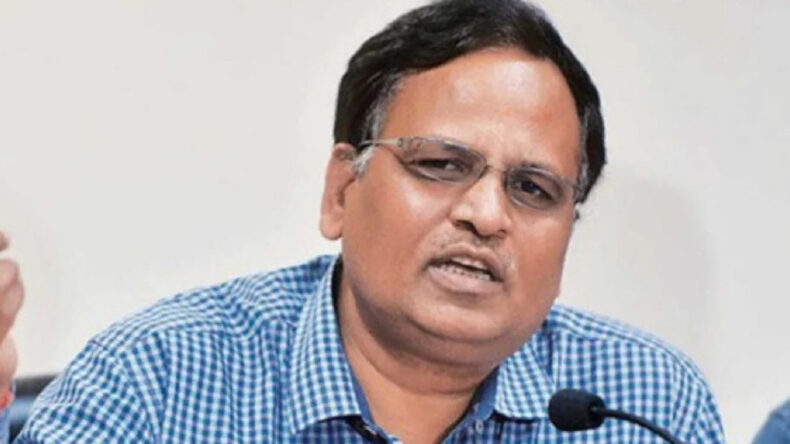In the labyrinthine world of legal battles, an intriguing case has emerged at the crossroads of medical grounds and allegations of financial impropriety. The central figure in this unfolding drama is Satyendar Jain, a senior leader of the Aam Aadmi Party (AAP). The case exemplifies the intricate relationship between health concerns and legal proceedings, shedding light on the delicate balance that courts must strike between individual well-being and the pursuit of justice.
The Money Laundering Allegations on Satyendar Jain
The legal saga commenced with the Enforcement Directorate (ED) launching a money laundering case against Jain, stemming from a 2017 corruption investigation conducted by the Central Bureau of Investigation (CBI). Accusations painted Jain as the mastermind behind an intricate web of money laundering activities. However, the narrative took a dramatic turn as Jain’s defense pivoted to health-related considerations.
A Health-Centric Turn
Citing serious health issues, Jain sought refuge in the Supreme Court, challenging a Delhi High Court’s decision to deny him bail. The Supreme Court’s response was to grant him interim bail for a duration of six weeks, starting on May 26. This ruling reaffirmed an individual’s right to access private medical treatment, even at personal expense, laying the groundwork for a multifaceted legal journey.
Subsequent hearings saw Jain’s interim bail extended multiple times, each extension hinging on the nuances of his medical condition and the gravity of the charges against him. On July 24, the Supreme Court further extended his interim bail by five weeks. The bench, led by Justice AS Bopanna and Justice MM Sundresh, meticulously reviewed Jain’s medical reports, elevating the importance of medical evidence in shaping legal decisions. Notably, the ED pushed for an impartial medical evaluation by prestigious institutions like AIIMS, an aspect that loomed over the proceedings.
Confluence of Legal and Medical Realms
The interweaving of legal intricacies and medical concerns persisted as the court grappled with the evidence against Jain and his health situation. The court acknowledged Jain’s history of surgery, emphasizing the significance of his medical condition. Simultaneously, the unresolved matter of an independent medical assessment sought by the ED added another layer of complexity to the proceedings. In a prudent move, the court postponed a decision on the ED’s request, signaling that it would be addressed in the upcoming hearings if deemed indispensable.
Balancing Act: Law and Medical Care
This case resonates with poignant questions about the equilibrium between legal proceedings and an individual’s entitlement to adequate medical care. The ordeal faced by Satyendar Jain exemplifies the intricate interplay between health and justice, underscoring the pivotal role courts play in harmonizing these domains. Jain’s predicament serves as a poignant example of how health conditions can substantially influence legal proceedings and the extent to which courts consider medical factors during trials.
The Complex Landscape
It’s vital to acknowledge that Jain had already been granted bail in the CBI case connected to the same matter. This fact underscores the labyrinthine nature of his legal entanglements and highlights the divergent strategies pursued by distinct investigating agencies. The complexity of the case illustrates the convoluted nature of modern legal scenarios, where the same individual can navigate a myriad of legal paths depending on the charges and parties involved.
A Nuanced Perspective
As the legal saga unfolds, the tale of Satyendar Jain accentuates the need for a nuanced understanding of the intersection between legal and medical aspects. The recurrent extensions of Jain’s interim bail by the Supreme Court signify the paramount importance of acknowledging an individual’s health circumstances while addressing the legal dimensions of a case. These decisions mirror the courts’ efforts to balance the pursuit of justice with the fundamental right to proper medical care.
The Allegations Persist
While the focus has been predominantly on Jain’s health and his right to opt for medical treatment of his choice, the allegations of money laundering continue to loom over the case. This dichotomy highlights the intricate dance that courts engage in, navigating the multifaceted layers of a case that encompasses both personal well-being and financial integrity.
Conclusion
In the ongoing legal battle involving Satyendar Jain, the symbiotic relationship between medical grounds and legal proceedings emerges as a central theme. Jain’s case poignantly underscores the courts’ balancing act, as they meticulously consider health concerns while addressing grave charges of financial impropriety. As the Supreme Court repeatedly extends Jain’s interim bail, the narrative underscores the complex interplay between legal procedures and an individual’s right to access proper medical care. Ultimately, this case serves as a poignant reminder that legal matters are not detached from personal welfare; they can often intertwine, prompting courts to intricately evaluate the complexities from both legal and medical vantage points.












